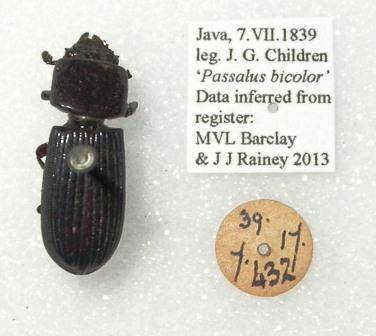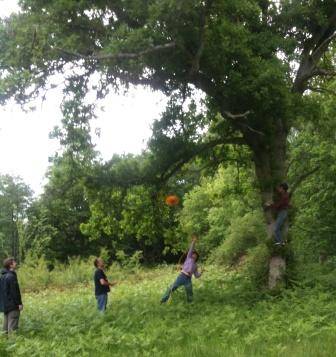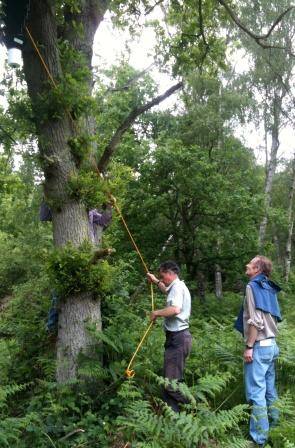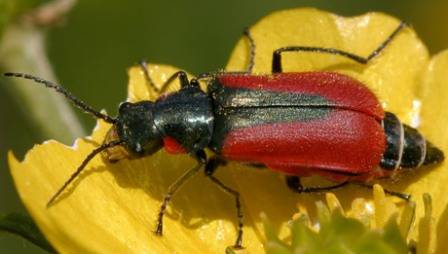Hello Beetlers,
The end of another busy week and the comings and goings of the Coleoptera section. This week we hear from Jordan Rainey, who was lucky enough to spend a week with us on work experience from school. Here's Jordan enjoying a tour of the collections:
These Dynastine beetles have such large horns that they have to live in a deepened drawer!
This week I have been lucky enough to do my work experience placement at the Natural History Museum, in the Coleoptera (beetle) section! I have been performing a variety of tasks overseen by one of the coleoptera curators, including preparatory work (mounting beetles on pins or on cards) and attaching accession labels to specimens so they can be put into the main collection or sent out to a specialist of that family/genus. I have also been sorting beetles into continents, and the recently collected material from Borneo, in alcohol, into families.
Pinning beetles into position ready for labelling and identifying
I was the very lucky person that got to sort the carrion trap material that Beulah talked about in a previous blog update. It smelt awful, of the rotting fish guts that were used as bait to attract to beetles! I was sorting the scarabs, non-scarabs and the Hydrophilidae into separate pots of alcohol. The Hydrophilids went into molecular strength alcohol so that the DNA could be preserved.
Jordan puts on a brave face - those beetles may look clean but they sure are smelly!
I was also sorting the Passalidae (Bess beetles) into countries and then continents. Most of them were unidentified and the localities were all mixed up, so I had to look at each individual locality label on every specimen and determine where it was collected. Some of the Passalids dated back to the 1800’s and a few may have been from Alfred Russell Wallace’s collection! I ended up with nine drawers full of hundreds of beetles all sorted to continents.
The hundreds of unidentified Passalids...
I would like to say a big thank you to the entire Coleoptera section, especially Max Barclay, Michael Geiser and Beulah Garner for making this an amazing and unforgettable week!
Thanks Jordan!
Some interesting results came from this exercise, in particular the repatriation of some specimens with their original data. When curating a collection with 250 years of history behind it, it is no surprise that some detective work must be employed on occasion. Take the specimen below, one of the Passalids that Jordan has been sorting. He came across it and noticed that there was very little data and no discernible 'BM' number (the number that all specimens must have once they are accessioned into the Museum collection). What he found was the small brown disk and nothing else. From this we assumed that '39' may well be the year the specimen entered the Museum and 432 be the accession number (the consecutive number assigned to an individual specimen or any number of specimens in a discreet collection in any given year).
Before the advent of computers of course all records were hand written, and our accession registers go back to the beginnings of the Museum around 1881! They are big leather-bound heavy tomes with entries written by quill and ink and are a portal into the history of the Museum! One thing leads to another and we were soon delving into the history of a certain Mr. J.G. Children which can be read below. We can see this beetle was collected a good few years before there was even a Museum in which to deposit it!
Though George Children was what one might say, unlucky in love, he certainly enjoyed an illustrous career in the natural sciences; here is his obituary from The Coleopterist
CHILDREN, John George (18 May (July?) 1777 - 1 January 1852)
The only son of George Children, a banker and wealthy landed property owner.Educated at Tonbridge Grammar School, Eton and Queen's College, Cambridge. He intended to join the church, but after marrying at the age of 21, Anna Holroyd who died shortly after, he abandoned this career, and travelled to Portugal and then to Canada and the United States of America. He returned to become a Captain in the West Kent Militia, but gave this up in 1805 as a result of ill health.Having studied mechanics, mineralogy and electricity at Cambridge, he then took up scientific pursuits becoming FRS in 1807. In 1808-09 he married for a second time but lost his wife a few months later. It was at about this time that he made a second visit to Spain.
In 1816, two year's before his father's death, the family lost all their properties as a result of the failure of the Tonbridge Bank. Through the kindness of Lord Camden he received an appointment as Assistant Librarian at the British Museum, first in the Department of Antiquities and subsequently in 1823, as a result of the intervention of Sir Humphry Davy, in Natural History. When the Zoological Department was created in 1837 he was appointed the first Keeper, a post which he held until 1839-40, when, as a result of failing health and the death of his third wife, he was obliged to retire.
Although not primarily an entomologist, Children did collect insects and was one of the founder members and first President of the Entomlogical Society. The meeting at which it was decided to found the Society took place in his house, and Children contributed the Introduction to the Society's first volume of Transactions (see Neave & Griffin (1933), for an account of Children and his involvement with the Society).
Children's collection of insects certainly included beetles and appears to have been large. His obituary in the Proc.LSL, 1852, p.137, described the collection as 'one of the most extensive in England' and noted that he had purchased the collection of Count Bilberg. He certainly gave specimens to the Entomological Society and, in 1839, to the British Museum. When the collection was sold by Stevens between 30 March and 4 April 1840 it amounted to 950 lots, many of which were bought by the British Museum. (These are listed in the NHM Entomology Department's Register. Entomology, 2 , 12 October 1839-2 April 1840 which records many thousands of specimens including 4,490 Coleoptera. Catalogues of this sale, and of his library at Sothebys between 6 and 8 March 1840, are preserved in the NHM. The insects have been amalgamated into the general collections. There are also specimens collected by Children in the Bracy Clarke collection at the NHM found by Dr Easton in an antique shop.
Davis & Brewer (1986) note that a collection of worldwide insects is in the Hancock Museum donated in 1830 by 'George Children' which is presumably this Children.
Letters to Thomas Hope, 1834, 1837, are in the HDO (Smith (1986) p.71)
Jonathan Cooter tells me that Sandra Children, who married the last survivor of J.G. Children's line, has exhibited at Hereford Museum.
FLS from 1807. Secretary of the RSL 1820-27 and 1830-37.
Gilbert (1977) p.67, lists further references in E. Miller, That Noble Cabinet, 1973, pp. 227-231, and in A.E. Gunther, A Century of Zoology at the British Museum 1815-1915, 1975, pp.56-62. (MD 3/02)
Lydia Oliva, a photographic historian from Barcelona, informs me that Children's only daughter, Anna Atkins, (on whom she has been working) published a book of photographs in 1843 (i.e. before Fox Talbot’s Pencil of Nature) and that she was introduced to photography by her father. Children went to live with his daughter in Halstead Place, London, after he retired. (MD 10/03)









